Star Trek: The Original Series: The Rings of Time Read online
Page 22
Spacewalk exercises had been mandatory back at the Academy, and Kirk had always excelled at them. He was a bit rusty, though. Command of the Enterprise seldom required him personally to stroll outside the ship. At best, he took part in an EVA once or twice a year, usually as part of an emergency drill. He hoped that those drills would pay off now.
Guide rails mounted on the exterior of the modules provided foot and hand holds for careful astronauts. Kirk hooked his carabiners to the rail for safety’s sake, then pulled himself along hand after hand. He moved briskly, tempted to ditch the tethers to save time. They slid along the rail behind him, making no noise in the silence of space. His feet dangled behind him, avoiding contact with the hull. The last thing he wanted right now was for O’Herlihy to hear footsteps stomping outside the ship.
The captain wished he knew what the desperate scientist was doing right now. Feverishly transmitting priceless scientific data back to Earth in his last few hours or rushing to check on the airlock? It was possible that he’d assumed that both prisoners had been flushed into space, but what if he guessed that a captive or two were attempting an unauthorized spacewalk? He was a brilliant man; he might well have figured out what Kirk had in mind, which could severely complicate matters later on. Given a choice, Kirk wanted O’Herlihy to be otherwise occupied when he attempted to reboard the ship.
Keep him busy, Zoe. You can do it.
The hab loomed before him, wider and more heavily insulated than the other modules. Its sides jutted out between the cargo bay and the command module like a section of snake that was digesting a large, lumpy meal. He had to scale its stern to reach the top of the hab, which he hurried across to make up for lost time. Arriving at the end of the module, he descended onto the vestibule connecting the hab to command, the same vestibule where he and Fontana had battled the fire only yesterday. Had they survived the blaze only to be torn apart and crushed by Saturn’s singularly violent atmosphere?
Not if he had anything to say about it.
He set out across the vestibule. Almost there, he thought. He looked ahead and saw the brilliant immensity of the rings towering over him like a tidal wave—or perhaps a colossal floating avalanche.
I was too slow, he realized. Here they come again.
He looked about for cover. A canopy-sized communications dish offered shelter, and he flew beneath it only a heartbeat before the ship entered the rings. The light from countless reflective particles, spread across more than a hundred thousand meters, blinded him, forcing him to shield his eyes. Minute pieces of dirty ice, most no larger than grains of sand, pelted the hull. More substantial chunks of ice mingled with the tiny particles. The myriad obstacles orbited Saturn like billions of miniature moons. A hailstone the size of a pebble smashed through the communications dish, barely missing Kirk’s head. A second piece ricocheted off the hull, leaving a dent in the titanium shielding. He crouched low and kept his head down. The multiple layers of his spacesuit contained a lining of rubberized nylon to prevent damage from micrometeorite strikes, but he knew that if a fast enough or large enough piece struck his life-support system or helmet, he was as good as dead. A volley of lethal frozen bullets strafed the ship. He recalled that the temperature of the rings was minus one hundred ninety degrees Celsius. He could feel the cold even through his insulated suit.
Hang on, he thought. It will all be over in a minute.
Although they stretched above and below the ship for as far as the eye could see, the rings were only about twenty times deeper than the Lewis & Clark was long. The accelerating spaceship swiftly passed through the rings into the open space above Saturn’s southern hemisphere. An immense aurora, produced by charged particles captured by the planet’s powerful magnetic field, shimmered above the south pole. The ship wouldn’t encounter the rings again, Kirk realized, until the ship passed over the pole and headed back up toward the equator on the opposite side of the planet. He decided that he wanted to be back inside before the next barrage.
That had been about as close to a firing squad as he cared to get.
Gliding out from beneath the punctured dish, he spotted numerous nicks and scratches on the hull, along with a few larger dents. A thorough inspection of the ship’s exterior was clearly called for, provided they survived the present mutiny. Ignoring the damage for the time being, he pulled himself along the guide rail, which was now warped and crimped in spots. Pushing against the thick suit and gloves from the inside was strenuous work. By now, his arms ached, and he was breathing hard. He couldn’t slow down, though. Not when time was running out.
He crossed from the vestibule onto the command module. Light shone from the windows, tempting him to scout out the situation before proceeding further. Moving stealthily, he peered through a porthole, which offered only a partial view of the flight deck. His eyes widened as he spotted Fontana bound to the same ladder she had tethered him to only hours ago. She appeared to be unconscious, but it was hard to tell. Hadn’t O’Herlihy said something about giving her something to sleep? He guessed that hadn’t been her idea.
Looking away from the drugged copilot, he searched for O’Herlihy at the helm and the computer terminals but failed to locate him. He hoped that meant that the saboteur was away from the command module at the moment. There was nothing downstairs, after all, but the blackened wreckage from the fire. Perhaps he was still investigating the disturbance at the airlock.
Good, Kirk thought. This is going to be tricky enough.
The docking ring was on the nose of the command module, attached to the mid-deck. Kirk prayed that the fire had not done serious damage to the airlock, or he could well find himself locked out in the cold. Descending past the cockpit windows, he got into position outside the docking hatch. Although procedure dictated that the hatch was to be opened only in conjunction with the onboard flight crew, the airlock had not been built to repel boarders. After all, space piracy was not really grounds for concern in this solar system yet. That was still generations away.
All the better for me, Kirk thought. He mentally patted himself on the back for memorizing the ship’s specs when he’d had the chance. Zoe’s tablet remained clipped to his wrist, having survived the bumpy passage through the rings. He clumsily stabbed the controls with his gloved fingers. Barring any untimely malfunctions, this should work.
He keyed in the final command.
The hatch slid open.
Let’s hear it for twenty-third-century know-how, he thought. I may have a future as a safecracker in this era.
Moving quickly, he entered the airlock and closed the hatch behind him. One more hatch lay between him and the mid-deck. He just needed to repressurize the compartment first, or else the force of the ship’s atmosphere rushing into the airlock would smash him into the outer hatch with bone-crushing force, if not blow out the hatch altogether. Unlike Spock, he could not instantly calculate exactly how many kilograms per square centimeter that would unleash, but he knew it was nothing to be taken lightly. Opening an unpressurized hatch would also set off alarms all over the ship, which he hoped to avoid if at all possible.
No need to alert O’Herlihy if he didn’t have to.
Waiting impatiently for the airlock to fill up with air, he peered through the six-centimeter porthole into the torched mid-deck, on the lookout for O’Herlihy, but all he saw was scorched rubble and the new fire extinguishers they had placed in the module as a precaution. He wished he knew where the treacherous doctor was hiding. For all Kirk knew, O’Herlihy was lying in wait just out of view, waiting to ambush him.
He reached instinctively for a phaser, only to realize his mistake.
Wrong ship, wrong century.
He would have to take his chances the old-fashioned way.
Ready or not, Doctor, here I come.
Twenty-five
2270
“Captain on the bridge!” Yeoman Voss announced.
All eyes turned toward Shaun Christopher, who needed a second to absorb the sight of the E
nterprise’s impressively large and colorful control center. Mr. Spock was seated at the center of the circular bridge, facing a wall-sized monitor or window. His crew was arranged around the perimeter, except for two officers manning a large console directly in front of Spock. From its look and position, Shaun guessed that they were doing the actual piloting. Seatbelts and straps had held the crew in place during the short-lived lapse in gravity. A bewildering array of displays, monitors, and instrument panels was enough to induce sensory overload. Shaun focused his gaze on the main screen.
Dozens of smaller spacecraft, of varied design, zipped across the monitor. An icy moon, boasting a full-fledged lunar habitat, was dwarfed by a huge ringed planet looming in the background. Purple bands streaked the planet.
“Oh my God!” Shaun exclaimed. “Is that Saturn?”
There had been no spaceships or moon colonies in the vicinity the last time he’d checked. Of course, that had been two hundred and fifty years ago . . .
“Klondike VI,” Spock corrected him. Despite his stoic demeanor, it was clear that he was not pleased by Shaun’s unexpected arrival on the bridge. “Captain, you should return to sickbay. You are not well.”
Shaun didn’t feel like playing along. “I’m not the captain, and I’m not crazy,” he declared. “I’m Colonel Shaun Christopher, and you know it!”
A quick glance around the bridge gave him a good idea of who had been let in on the secret and who had not. Several crew members, including the helpful yeoman, were clearly startled and confused by his outrageous claim, but others merely looked worried. The veiled woman, whom he remembered from the transporter room, turned toward him. He noted that she wasn’t wearing a Starfleet uniform like everyone else.
“Shaun Christopher?” she echoed, sounding intrigued. “Curiouser and curiouser.”
Mr. Spock let out a barely perceptible sigh. “Attention, all hands,” he addressed the bridge crew. “Please be aware that the individual before you is not actually the captain. There is no time to explain the situation fully, but I expect you all to disregard any orders except my own.” He turned toward Shaun. “Colonel Christopher, you can clearly see that we are in the midst of a crisis. I must ask that you leave the bridge immediately.”
“No way, Spock. I’m here in this time now, and I don’t intend to sit on the sidelines.” He shrugged Kirk’s shoulders. “Who knows? Maybe that probe sent me here for a reason.”
“Now, there’s an interesting possibility,” the veiled woman observed. “Mr. Spock, maybe we should find out what our unlikely guest has to offer. He may have insights into the probe—and our present situation—that we have missed.”
“I have already interrogated the colonel,” Spock stated curtly. “But you are free to take custody of him if you wish. At the moment, I have other matters to attend to.”
Shaun got the distinct impression that he was being handed off to a babysitter, but he figured that beat being expelled forcibly from the bridge and possibly thrown into the brig. He joined the veiled woman at one of the auxiliary stations. “Shaun Christopher,” he introduced himself. “At your service.”
“Qat Zaldana,” she identified herself. “And would that be the Colonel Shaun Geoffrey Christopher of space history fame?”
He nodded, both surprised and flattered that she recognized his name. “You’ve heard of me?”
“I’m quite familiar with your illustrious résumé, Colonel,” she said, “although I admit I never expected to make your acquaintance, let alone under such bizarre circumstances.”
She seemed to be taking those circumstances remarkably well, especially considering that he looked like James T. Kirk at the moment. Did this sort of thing happen often in the future? He certainly hadn’t gotten that impression from Dr. McCoy.
“This is a bit out of my comfort zone, too,” he confessed. “NASA never trained me for anything like this.”
On the screen, some of the smaller ships appeared to be retreating to a domed complex on the nearby moon. Chunks of flying space debris endangered the numerous vessels, although the Enterprise was clearly attempting to provide cover for them by blasting the larger missiles apart with powerful blue laser beams. The beams seemed to pack enough firepower to make the Pentagon drool with envy.
“Maintain defensive fire, Mr. Chekov,” Spock instructed. “Target all hazards to ships or colony.”
“Aye, aye, sir,” a young ensign reported. His Russian accent reminded Shaun of the cosmonauts he had trained with at the Star City complex outside Moscow. “Shields restored to usual configuration. Deflectors at thirty-five percent and rising.”
“That’s more like it,” said an Asian crewman sitting to the Russian’s left. “Helm controls responding again.”
“Excellent, Mr. Sulu,” Spock said. “Take us further above the rings to reduce the chance of any future collisions.”
“With pleasure,” Sulu replied. “Altering trajectory relative to the equator. Attempting to stay within firing range of Skagway.”
The image on the wall screen shifted as the Enterprise ascended higher above the plane of the rings. The turbulence shaking the ship began to abate, even as Shaun tried to figure out exactly what was going on. He gathered that the moon colony was in jeopardy, and possibly the starship, too, but the details remained murky. Dr. McCoy hadn’t exactly kept him informed about current events.
Shaun sat down next to Qat Zaldana. “Why don’t you bring me up to speed?” he suggested.
“Since the twenty-first century?” she quipped. “That could take a while.”
He nodded at the screen. “How about just what’s happening out there?”
“That I can manage.” She quickly explained that the planet’s rings were coming apart and that the moon itself was spiraling into the inner rings toward the planet itself. To make matters worse, it seemed that more than a thousand people were still stranded on the moon, and even the Enterprise, as impressive as it was, wasn’t big enough to carry them all to safety.
No wonder Spock looks so grim, Shaun thought. They were looking at a tragedy of catastrophic proportions, like Katrina or Mount Rainier. “And there’s nothing you can do?”
She shook her head. “We suspect this disaster may have something to do with that alien probe and possibly an unusual hexagonal vortex down on the planet, but we haven’t been able to put all of the pieces together, at least not in time to save the people left on Skagway.”
“Hexagon?”
“That’s right,” she said. “There’s a hexagonal storm at the planet’s north pole, much like the one on Saturn, which started shrinking at about the same time the rings began to destabilize. We assume there’s some kind of connection or causal link.”
Talk about déjà vu, Shaun thought, if that was the right term for remembering something from your own past while occupying someone else’s body in the future. “That sounds a lot like what we were observing back in my time, right before I ended up here. Saturn’s rings were behaving strangely, the hexagon was shrinking, and so on. The scientists back in my time didn’t know what to make of it.” Shaun remembered how nonplussed O’Herlihy had been by his findings.
“How strange,” Qat Zaldana said. “Mr. Spock, are you listening to this?”
“Indeed,” Spock admitted. He spun his chair around to face them. “You have successfully captured my attention. Please continue your recollections, Colonel Christopher.”
“Not much more to say,” Shaun said. “We were studying the phenomenon from the Lewis & Clark when the probe distracted us.” He chuckled at the memory. “Trust me, that voyage was full of surprises.”
“None of that is in the historical record,” Qat Zaldana said. “And I’m an astronomer. I would know.”
“Must have been covered up,” Shaun guessed. “I don’t know how it is in your time, but back where—I mean, when—I come from, governments had plenty of secrets that they guarded zealously.” His stint at Area 51 had taught him that and then some. “But it sounds to me
like that big purple planet out there is going through the same thing Saturn did back in 2020.”
“Except that Saturn and its rings and moons remain constant to this day,” Spock said. “They are now much as you would have known them before your historic mission, which implies that the phenomenon you observed was reversed somehow.”
That makes sense, Shaun thought. He tried to imagine what could have affected the rings way back when. “You think it was the probe?”
“Possibly,” Qat Zaldana said. “What exactly do you remember, Colonel?”
He threw his mind back, trying to recapture every detail. In theory, centuries had passed since his dramatic run-in with the probe, but it had been only a couple of days for him.
“There were these pulses,” he recalled. “Just before the probe zapped me here, it fired some sort of pulsed energy burst at the heart of the hexagon.” He glanced up at the screen. “Kind of like those high-powered lasers of yours.”
“Phasers,” Spock corrected him. “Are you certain the pulses were directed at the vortex on the planet’s surface?”
“Absolutely.” It was all coming back to him now. “I’ll never forget it. I was floating in space, preparing to bring the probe aboard, when it suddenly fired off these incandescent bolts of bright blue energy, which triggered a reaction down on the planet.”
Qat Zaldana leaned toward him. “What sort of reaction?”
“The whole hexagon lit up, glowing like a pinwheel, and a shock wave sent me tumbling away from the probe. Then the pulses just stopped, like I had just imagined them.”
“And then what happened?” she asked.
“The hexagon,” he recalled. “It almost looked as though it was going back to normal after the pulses. Its sides stopped contracting and started heading outward again at an incredible rate. It was probably a stupid thing to do, but I couldn’t resist flying back to check out the probe again. I made the mistake of grabbing onto it and ended up here . . . in your captain’s body.” He still couldn’t believe how insane that sounded. “I don’t know what happened next.”

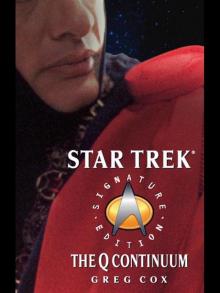 Q-Space
Q-Space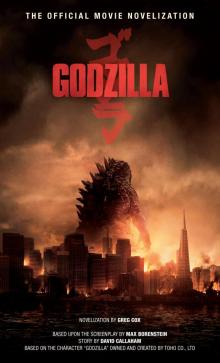 Godzilla - the Official Movie Novelization
Godzilla - the Official Movie Novelization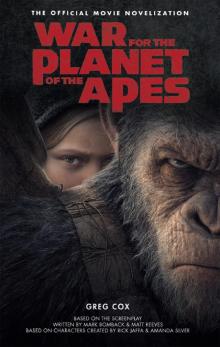 War for the Planet of the Apes: Official Movie Novelization
War for the Planet of the Apes: Official Movie Novelization Underworld: Evolution
Underworld: Evolution Underworld
Underworld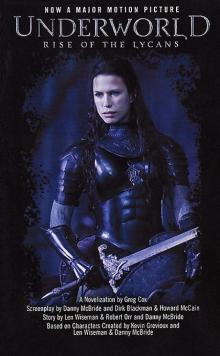 Rise of the Lycans
Rise of the Lycans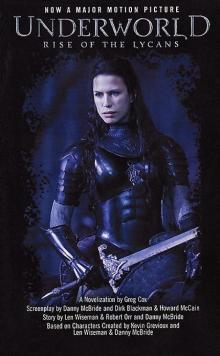 04 - Rise of the Lycans
04 - Rise of the Lycans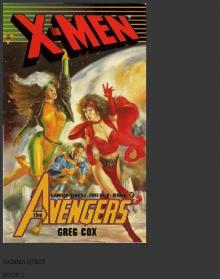 X-Men and the Avengers: Search and Rescue
X-Men and the Avengers: Search and Rescue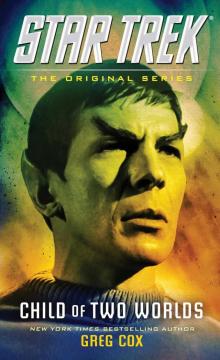 Child of Two Worlds
Child of Two Worlds Welcome to Promise City
Welcome to Promise City The Librarians and the Mother Goose Chase
The Librarians and the Mother Goose Chase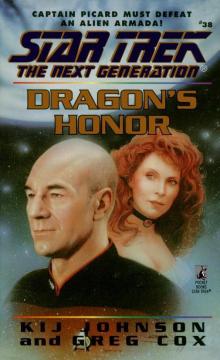 Dragon's Honor
Dragon's Honor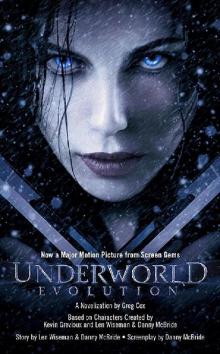 03 - Evolution
03 - Evolution DC Comics novels--Batman
DC Comics novels--Batman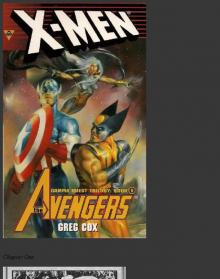 X-Men and the Avengers: Lost and Found
X-Men and the Avengers: Lost and Found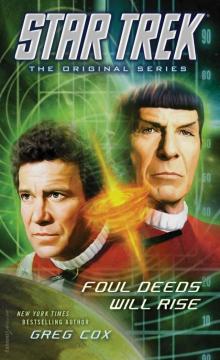 Foul Deeds Will Rise
Foul Deeds Will Rise 02 - Blood Enemy
02 - Blood Enemy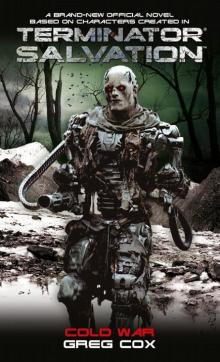 Terminator Salvation: Cold War
Terminator Salvation: Cold War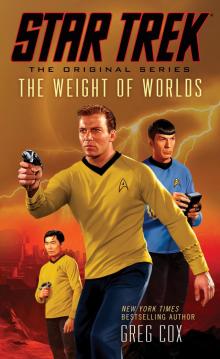 The Weight of Worlds
The Weight of Worlds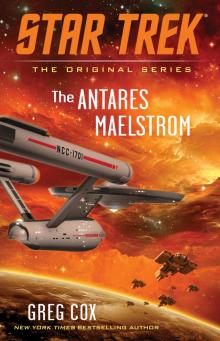 The Antares Maelstrom
The Antares Maelstrom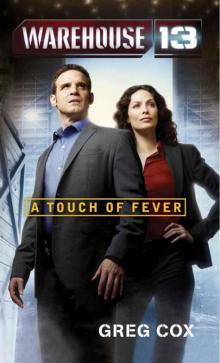 Warehouse 13: A Touch of Fever
Warehouse 13: A Touch of Fever Underworld: Blood Enemy
Underworld: Blood Enemy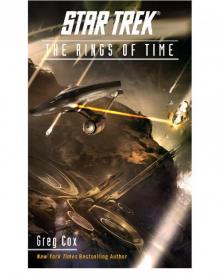 The Rise and Fall of Khan Noonien Singh
The Rise and Fall of Khan Noonien Singh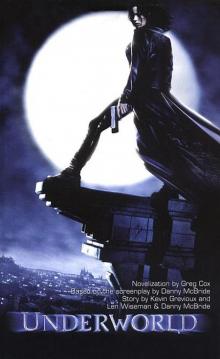 01 - Underworld
01 - Underworld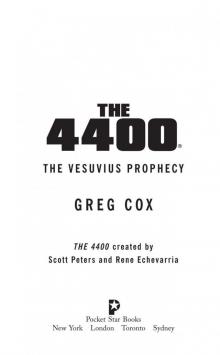 The 4400- the Vesuvius Prophecy
The 4400- the Vesuvius Prophecy Assignment: Eternity
Assignment: Eternity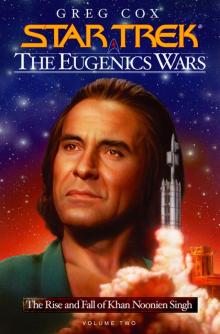 The Eugenics Wars, Vol. 2: The Rise and Fall of Khan Noonien Singh
The Eugenics Wars, Vol. 2: The Rise and Fall of Khan Noonien Singh The Dark Knight Rises: The Official Novelization
The Dark Knight Rises: The Official Novelization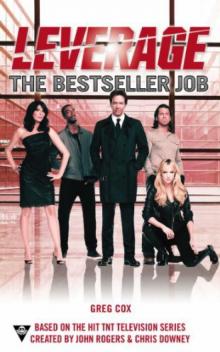 The Bestseller Job
The Bestseller Job X-Men and the Avengers: Friend or Foe?
X-Men and the Avengers: Friend or Foe?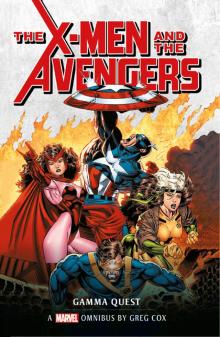 Marvel Classic Novels--X-Men and the Avengers
Marvel Classic Novels--X-Men and the Avengers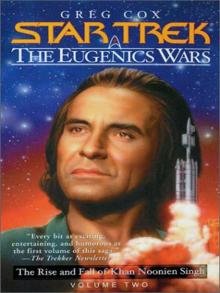 STAR TREK: TOS - The Eugenics Wars, Volume Two
STAR TREK: TOS - The Eugenics Wars, Volume Two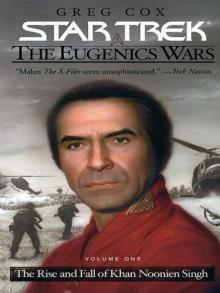 STAR TREK: TOS - The Eugenics Wars, Volume One
STAR TREK: TOS - The Eugenics Wars, Volume One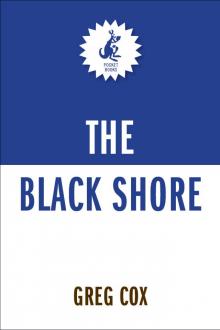 The Black Shore
The Black Shore Man of Steel: The Official Movie Novelization
Man of Steel: The Official Movie Novelization Loose ends r-1
Loose ends r-1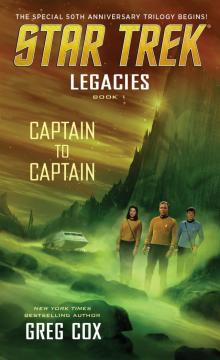 Legacies
Legacies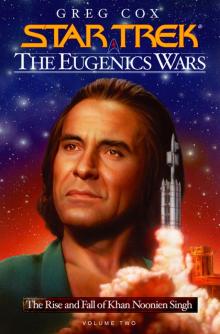 The Eugenics Wars, Volume Two
The Eugenics Wars, Volume Two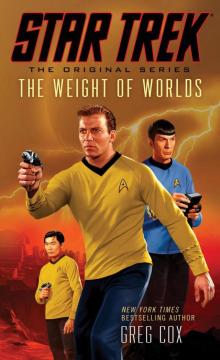 Star Trek: The Original Series - 148 - The Weight of Worlds
Star Trek: The Original Series - 148 - The Weight of Worlds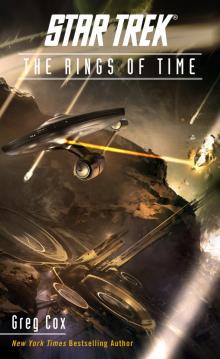 Star Trek: The Original Series: The Rings of Time
Star Trek: The Original Series: The Rings of Time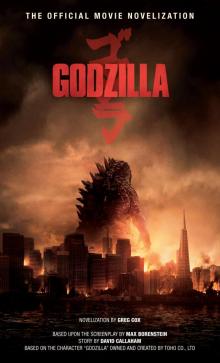 Godzilla--The Official Movie Novelization
Godzilla--The Official Movie Novelization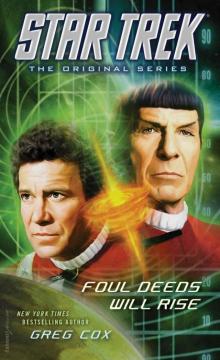 Star Trek: The Original Series - 160 - Foul Deeds Will Rise
Star Trek: The Original Series - 160 - Foul Deeds Will Rise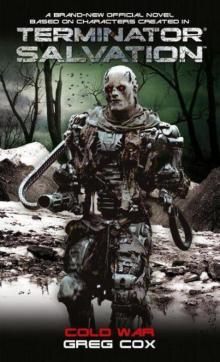 Terminator Salvation: Cold War ts-3
Terminator Salvation: Cold War ts-3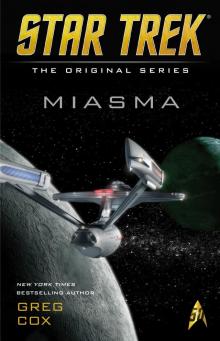 Star Trek: The Original Series: Miasma
Star Trek: The Original Series: Miasma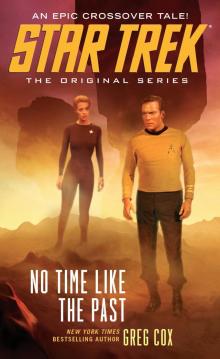 Star Trek: The Original Series: No Time Like the Past
Star Trek: The Original Series: No Time Like the Past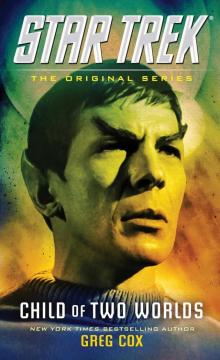 Child of Two Worlds (Star Trek: The Original Series)
Child of Two Worlds (Star Trek: The Original Series)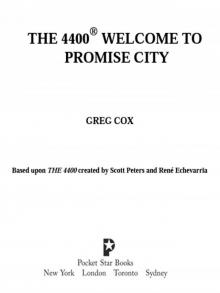 THE 4400® WELCOME TO PROMISE CITY
THE 4400® WELCOME TO PROMISE CITY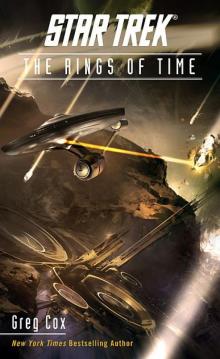 Star Trek: The Original Series: The Rings of Time (star trek: the original series)
Star Trek: The Original Series: The Rings of Time (star trek: the original series)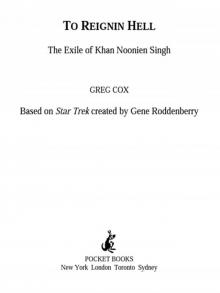 To Reign in Hell: The Exile of Khan Noonien Singh
To Reign in Hell: The Exile of Khan Noonien Singh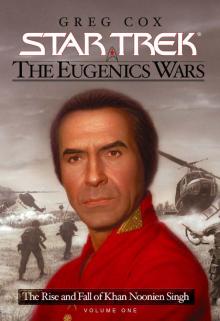 Star Trek: The Eugenics War, Vol. 1
Star Trek: The Eugenics War, Vol. 1 The Q Continuum
The Q Continuum